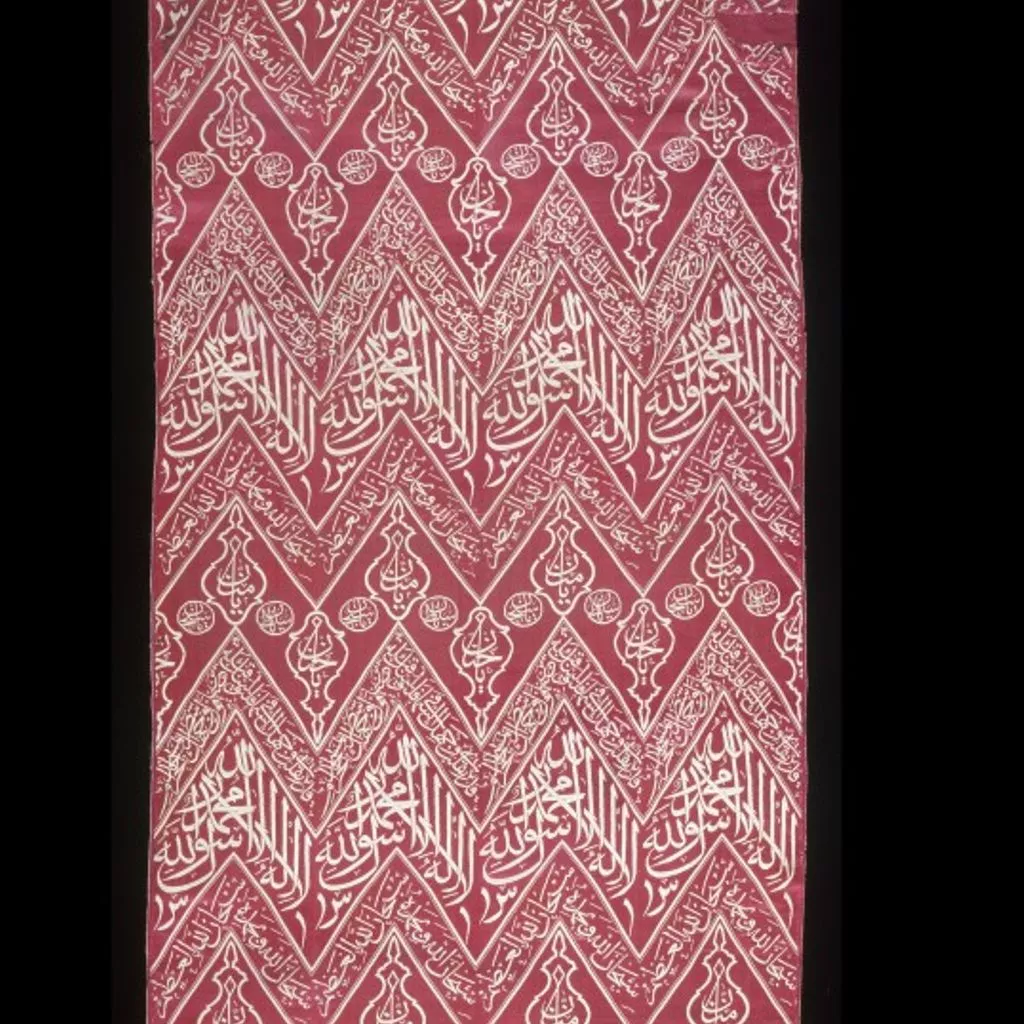Description
Silks like this with zigzag designs on a red ground were specially made to line the Ka’bah. This is the cube-shaped stone building at Mecca which is the major site for Muslim pilgrimage.
On this textile the largest inscription is the Shahadah, the Islamic declaration of faith. The narrower band above it contains a quotation from the Qur'an. In it, God instructs Muslims to pray towards the Ka'bah. The other texts praise God.
Grand mausoleums were erected over the graves of the great and the holy in most Islamic societies. These buildings included the tomb of the Prophet Muhammad himself in his mosque at Medina, north of Mecca.
Caring for the Prophet’s tomb was a notable honour. When the Ottoman dynasty ruled Medina (1517–1916), special textiles were made to cover his tomb. Similar textiles were sent to decorate the Ka’bah in Mecca. Contact with the holy places imbued these covers with ‘barakah’ or divine grace. When the covers were renewed, pieces were preserved as relics.
Tomb cover (section of the lining of the Ka'bah), Turkey (probably Bursa), ca. 1800.
Jameel Gallery
Section of the Lining of the Ka'bah
Turkey, probably Bursa
About 1800
Silks with zigzag designs on a red ground were specially made to line the Ka'bah, the holy shrine in Mecca. The largest inscription is the Shahadah, the Islamic declaration of faith. The narrower band above it contains a quotation from the Qur'an. In it, God instructs Muslims to pray towards the Ka'bah. The other texts praise God.
Silk thread in lampas weave
Museum number 1063-1900
Given by Dudley B. Myers, Esq. [2006-2012]
Red silk with zigzag bands in yellow containing calligraphy (including the shahadah, verses from the Qur'an, and invocations of God). Lampas weave, with satin ground and weft-faced twill pattern. Warp and weft are of silk.




